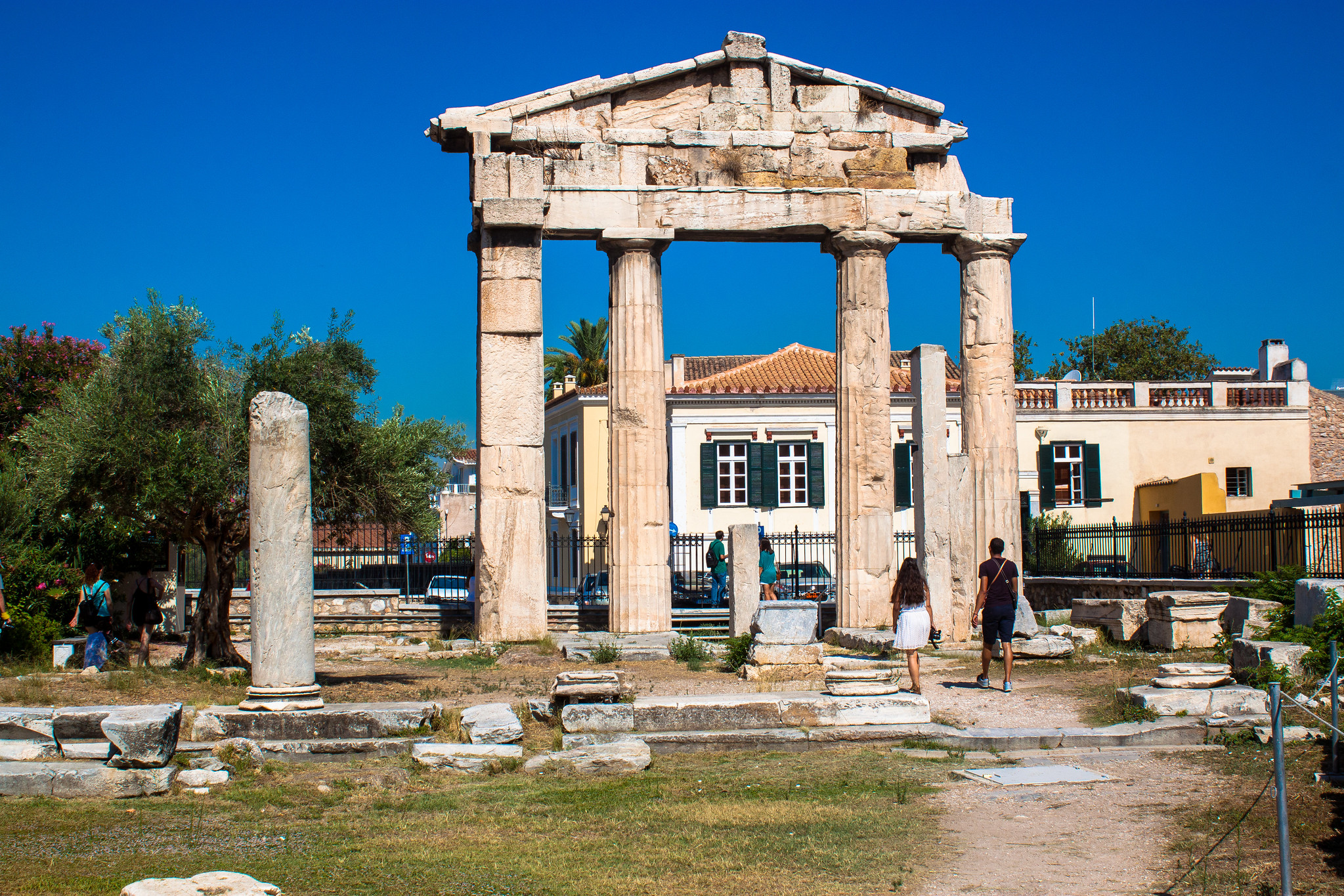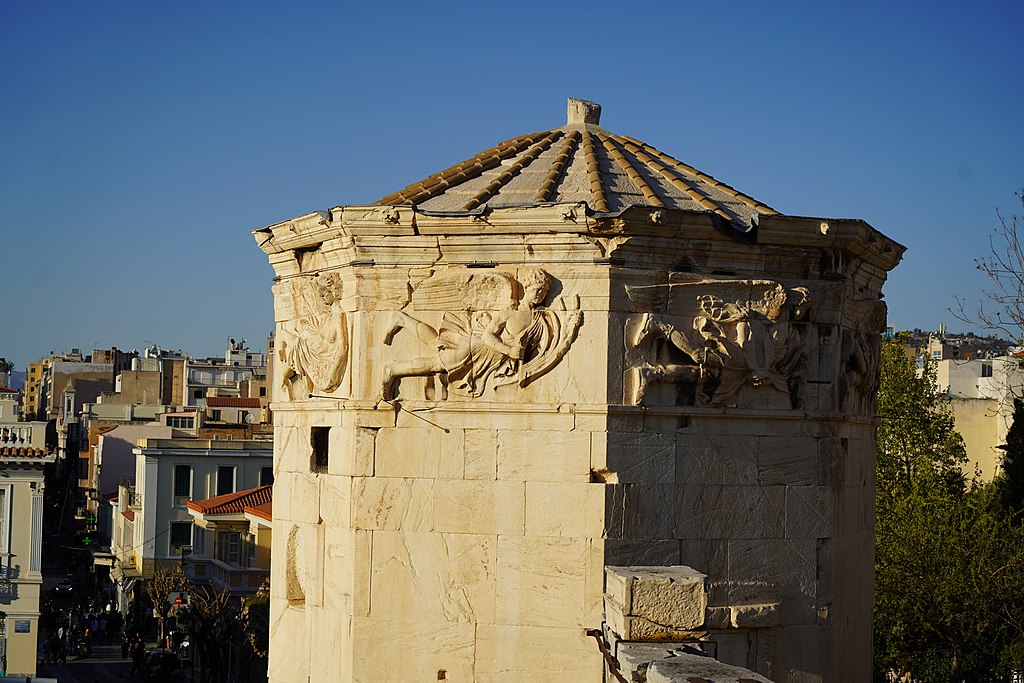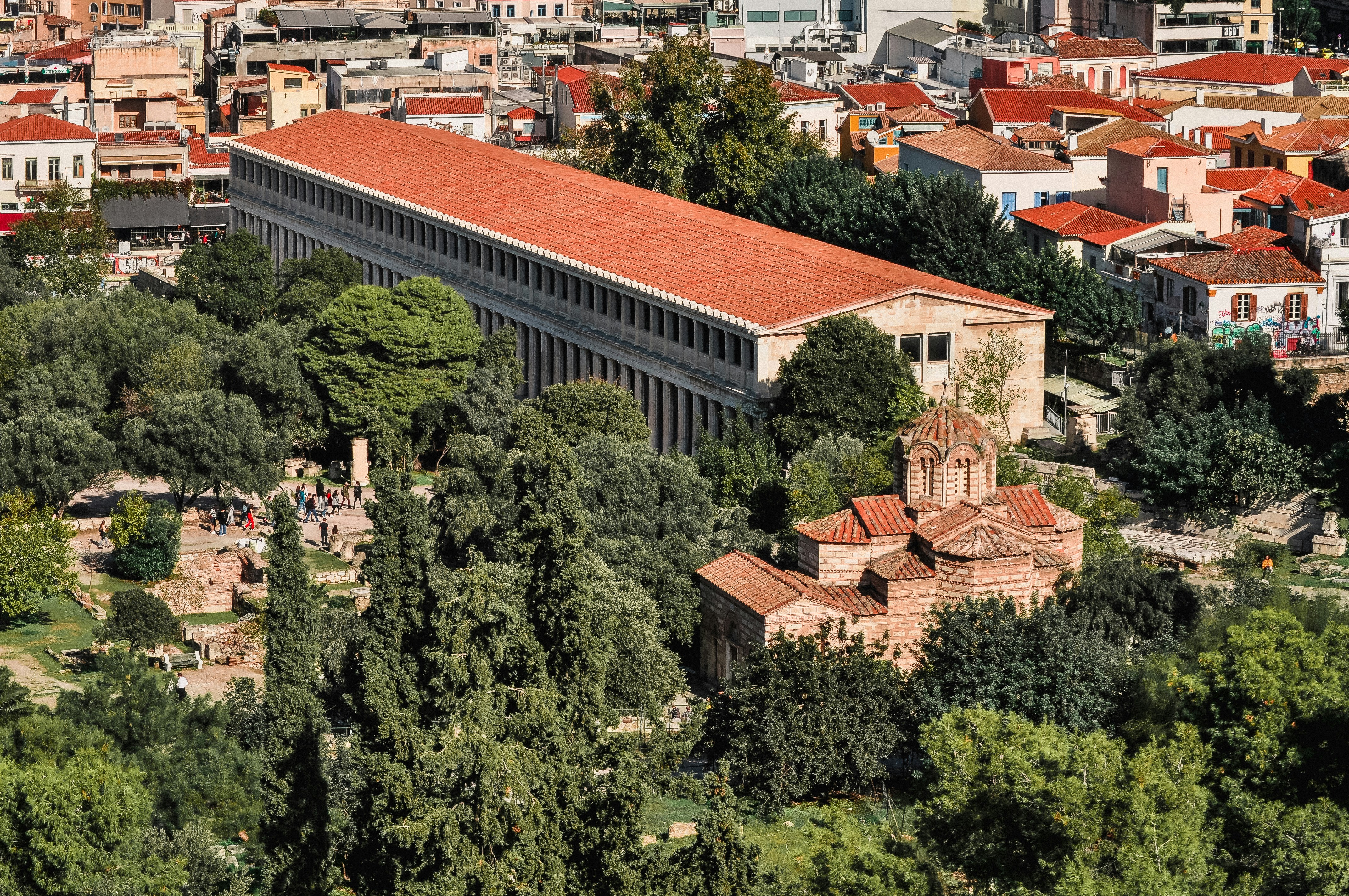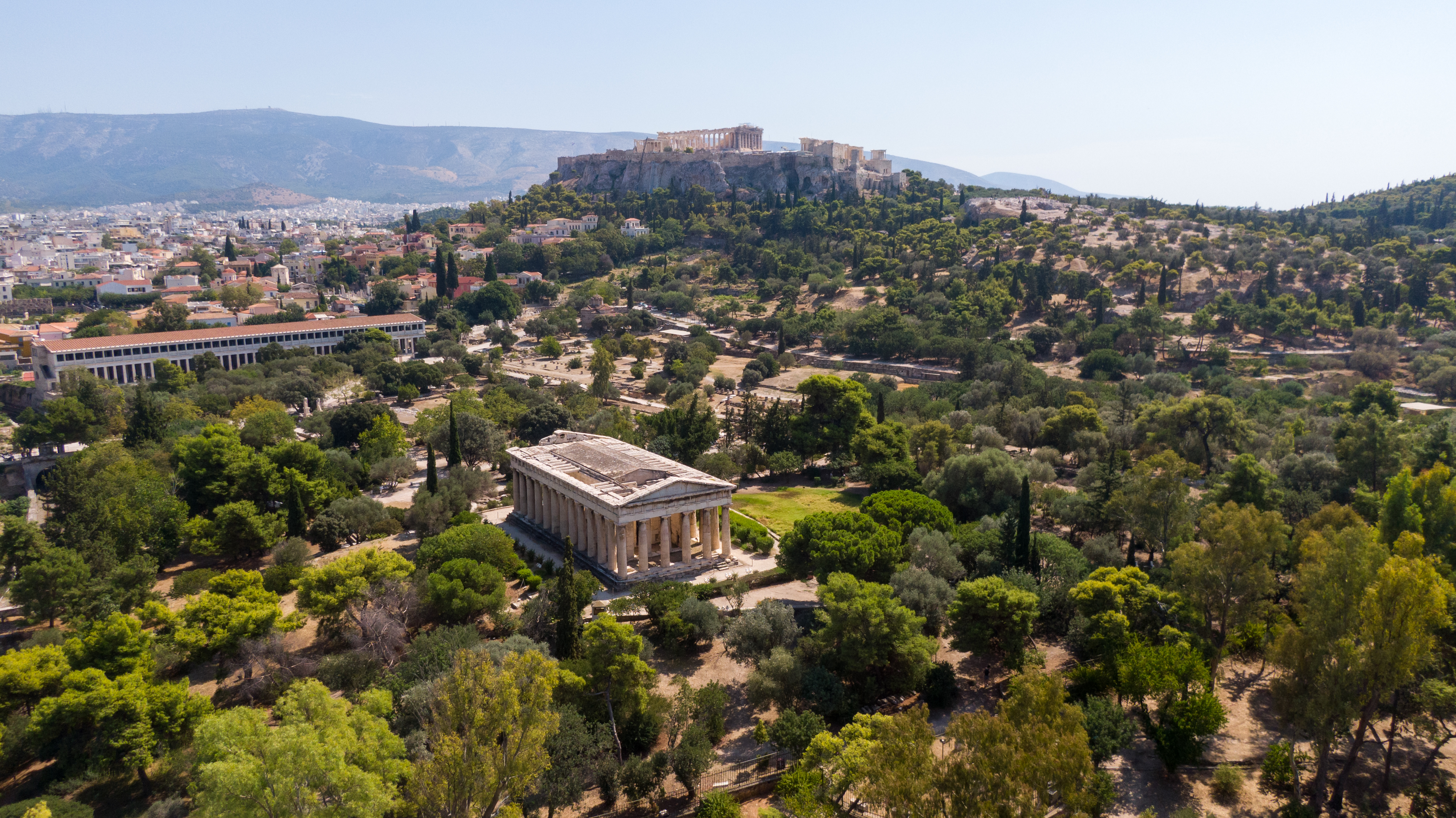The Roman Agora of Athens


The Roman Agora of Athens: A Walk Through Time
When most people think of Athens, the image that comes to mind is that of its classical splendor—ancient temples, grandiose statues, and the storied Acropolis standing tall over the city. But for those of us who have wandered through the narrow streets of Plaka and Monastiraki, there’s a hidden gem that often goes unnoticed—the Roman Agora.
Rediscovering Rome in Athens
The Roman Agora may not have the same immediate recognition as its older, Classical counterpart, but it plays a crucial role in the rich tapestry of Athens’ history. Built under the patronage of Julius Caesar and Augustus, this site was the beating heart of commercial life during the Roman period in Athens.
The Gate of Athena Archegetis: A Grand Entrance
As you step through the monumental Gate of Athena Archegetis, you’re greeted by an inscription that commemorates the benefactors who made this place possible. This was more than just an entrance; it was a statement of Rome’s commitment to the city of Athens, a city that they deeply admired. I remember the first time I walked through this gate, and I couldn’t help but imagine the traders and citizens who once passed through here, their lives intertwined with the ebb and flow of commerce.
The Marketplace: Where Commerce and Culture Met
The agora itself is a large, open-air courtyard surrounded by colonnades made of Pentelic marble, which once hosted merchants selling everything from olive oil to textiles. As you walk along the South Colonnade, you can still see the remnants of shops and storerooms. In the quiet of the afternoon, I often pause here, imagining the hustle and bustle that once filled this space—the calls of vendors, the clinking of coins, and the occasional heated debate over the price of goods.
A particularly fascinating feature of the Roman Agora is the system for measuring goods. The stylobates—marble bases of the colonnades—still have round cavities carved into them. These were used to measure out quantities of goods, a testament to the highly organized commercial activities that took place here.
The Tower of the Winds: An Ancient Meteorological Marvel

Just beyond the eastern propylon of the agora stands the Tower of the Winds, an octagonal marvel that has captivated visitors for centuries. Built by the astronomer Andronikos of Kyrrhos in the mid-1st century B.C., this structure is not only beautiful but also highly functional. It served as the world’s first meteorological station, complete with sundials, a hydraulic clock, and a weather vane that indicated the direction of the wind.
Whenever I visit the Tower of the Winds, I’m struck by the ingenuity of ancient engineers. To think that merchants relied on this tower to anticipate the arrival of goods from the port of Piraeus is a reminder of how intertwined science and daily life were in ancient times.
Connecting the Dots: A Journey Through Time
What makes the Roman Agora truly special is the way it connects the dots between different epochs of Athens’ storied past. This site is not just a relic of Roman architecture; it is a symbol of the city’s resilience and adaptability. Despite the many upheavals and transformations Athens has undergone, the Roman Agora remains a place where the threads of history are woven together into a rich tapestry of continuity and change.
As you stand among the ruins, it’s easy to imagine how this space once served as the bustling commercial hub of Roman Athens. The Library of Hadrian, which adjoins the agora, represents another crucial piece of this historical puzzle. This grand structure wasn’t just a repository of knowledge but also played a pivotal role in the administrative life of the city, especially after the Herulian invasion in 267 A.D., which led to the decline of the classical agora.
Walking through the Roman Agora today, you can feel the layers of history beneath your feet. Each stone, each fragment, tells a story—not just of the Roman period, but of a city that has continuously evolved while retaining its ancient spirit. The Roman Agora bridges the gap between the classical and Roman eras, serving as a reminder that history is not a series of isolated events, but a continuous flow of human experience.
For those of us who seek to understand the deeper currents of history, the Roman Agora is more than just an archaeological site; it is a living connection to the past, a place where the echoes of ancient voices still resonate in the heart of modern Athens.
Visiting the Roman Agora Today
If you find yourself in Athens, make time to visit the Roman Agora. It’s easy to get lost in the grandeur of the Acropolis and the Parthenon, but the Roman Agora offers a quieter, more introspective experience. It’s a place where you can step back in time, away from the crowds, and immerse yourself in the daily life of ancient Rome in Athens.
Whether you’re a history buff, an archaeologist, or just someone with a curiosity for the past, the Roman Agora is a site that deserves your attention. Take your time, walk slowly, and let the history of this remarkable place sink in. You won’t regret it.
If you’re looking to dive deep into the rich history of Athens, two highly recommended guided tours will elevate your experience beyond the typical tourist path.
Athens: Acropolis and Ancient Athens Tour
This four-hour tour is perfect for history buffs who want to explore the heart of ancient Athens. It covers both the Acropolis and the Roman Agora, offering a well-rounded look into the city’s ancient past. With expert guides, you’ll uncover the stories and significance behind these iconic landmarks, making it a must for those who wish to gain a deeper understanding of Athens’ ancient world.
Highlights and Hidden Gems of Athens
For those who prefer exploring off the beaten path, this tour focuses on the hidden gems of Athens, including areas around the Roman Agora. It’s ideal for travelers who want a more personalized experience and to discover the lesser-known stories and sites that make Athens truly unique. This tour is not just about history, but about uncovering the secrets that even many locals might not know.
The Ultimate Athenian Experience: The Acropolis and 6 Archaeological Sites Combo Ticket
For those who wish to explore Athens at their own pace while covering all the essential archaeological sites, the Acropolis and 6 Archaeological Sites Combo Ticket is the perfect choice. This ticket offers access to seven significant sites, including the Acropolis, Roman Agora, and Ancient Agora, among others. It’s the ultimate ticket for a comprehensive Athenian adventure, allowing you to delve into the city’s history over several days at your leisure.
Frequently Asked Questions about the Roman Agora in Athens
Is the Roman Agora in Athens worth visiting?
Absolutely! The Roman Agora is a significant historical site that offers insight into the Roman period of Athens. It is less crowded than the Acropolis but equally rich in history, making it a must-visit for history enthusiasts.
How long does it take to see the Roman Agora in Athens?
On average, visitors spend about 1 to 1.5 hours exploring the Roman Agora. This allows enough time to appreciate the major structures like the Gate of Athena Archegetis and the Tower of the Winds, as well as to absorb the atmosphere of this ancient marketplace.
Who built the Roman Agora in Athens?
The Roman Agora was constructed during the late 1st century BC and early 1st century AD. It was primarily funded by Julius Caesar and Augustus as part of their efforts to revitalize the city of Athens during Roman rule.
What is the difference between the Acropolis and the Agora?
The Acropolis served as the religious and ceremonial heart of ancient Athens, dominated by the Parthenon and other temples. In contrast, the Agora (both Roman and Ancient) functioned as the social, political, and commercial hub where citizens gathered for a variety of activities, including markets, political meetings, and philosophical discussions.
Is the Ancient Agora and Roman Agora the same?
No, the Ancient Agora and Roman Agora are distinct sites, though they are often confused due to their proximity and similar functions. The Ancient Agora was the original marketplace and civic center of Athens, dating back to the 6th century BC. The Roman Agora, built later, served as an extension of the commercial activities when the original Agora became too crowded.
Header Photo by andyhay on Flickr (licensed under CC BY 2.0).
Wind Tower Photo by [TimeTravelRome] on Wikimedia Commons (licensed under CC BY 2.0).




Comments